Abstract
Since an excellent candidate strain (M) for live virus vaccination of swine against Japanese encephalitis was developed, a number of large vaccination programmes have been implemented in Japan with the aim of controlling Japanese encephalitis epidemics in man by reducing the population size of nonimmune swine. Encouraging results have been obtained but no studies have been made on the benefits of live-virus vaccination to the industry. In order to determine the effect of vaccination upon the number of stillbirths occurring in the Japanese encephalitis post-emergence season, a total of 74 vaccinated, and subsequently mated, gilts at a large breeding farm in subtropical Taiwan were subjected to follow-up observations in comparison with a control group. The total incidence of litter stillbirths in the vaccinated group (1/74) was significantly lower than that in the control group (21/68). Over 92% of the newborn piglets from the vaccinated gilts were healthy, while 31.6-54.1% of the newborn piglets in the control groups were stillborn. The litter size of vaccinated gilts was larger than that of the control gilts. The vaccine was shown by tests in 22 swine to have an adequate degree of safety. Four weeks after vaccination with either 105.6 or 108.0 smicLD50 of virus, all the swine developed an adequate level of antibody. The results indicate that live virus vaccination could benefit the industry in addition to achieving the main aim of controlling Japanese encephalitis viraemia in swine.
Full text
PDF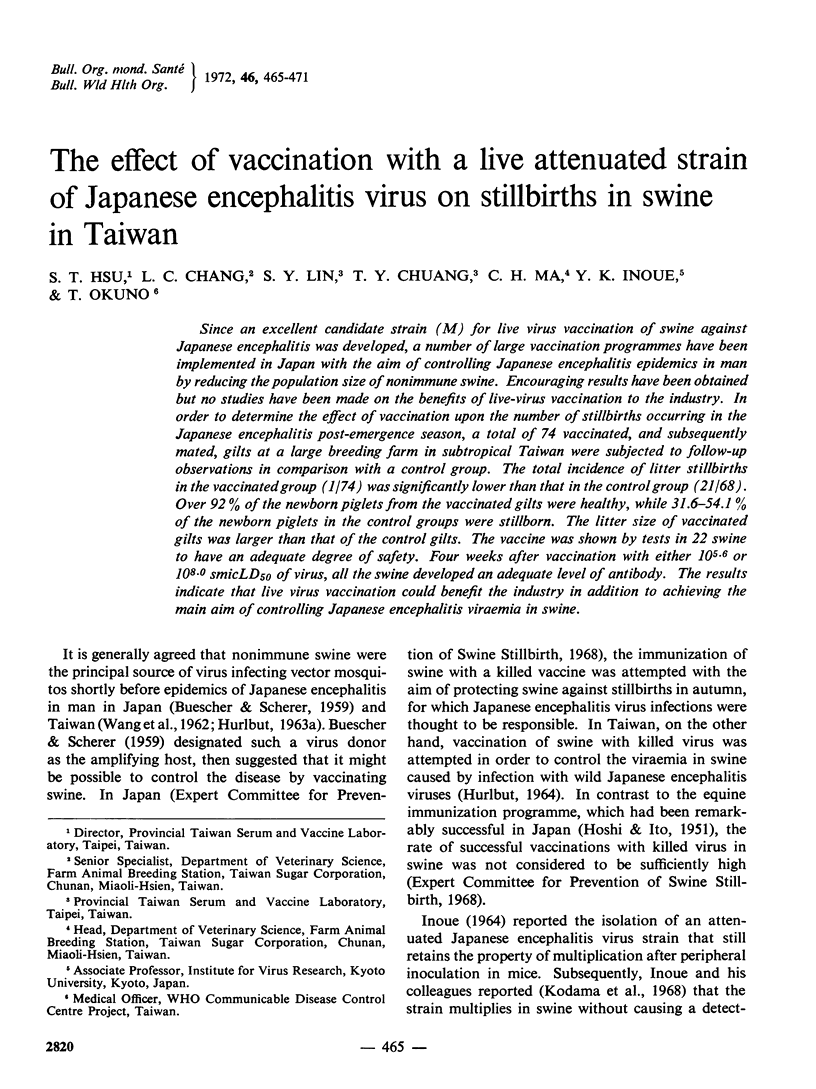
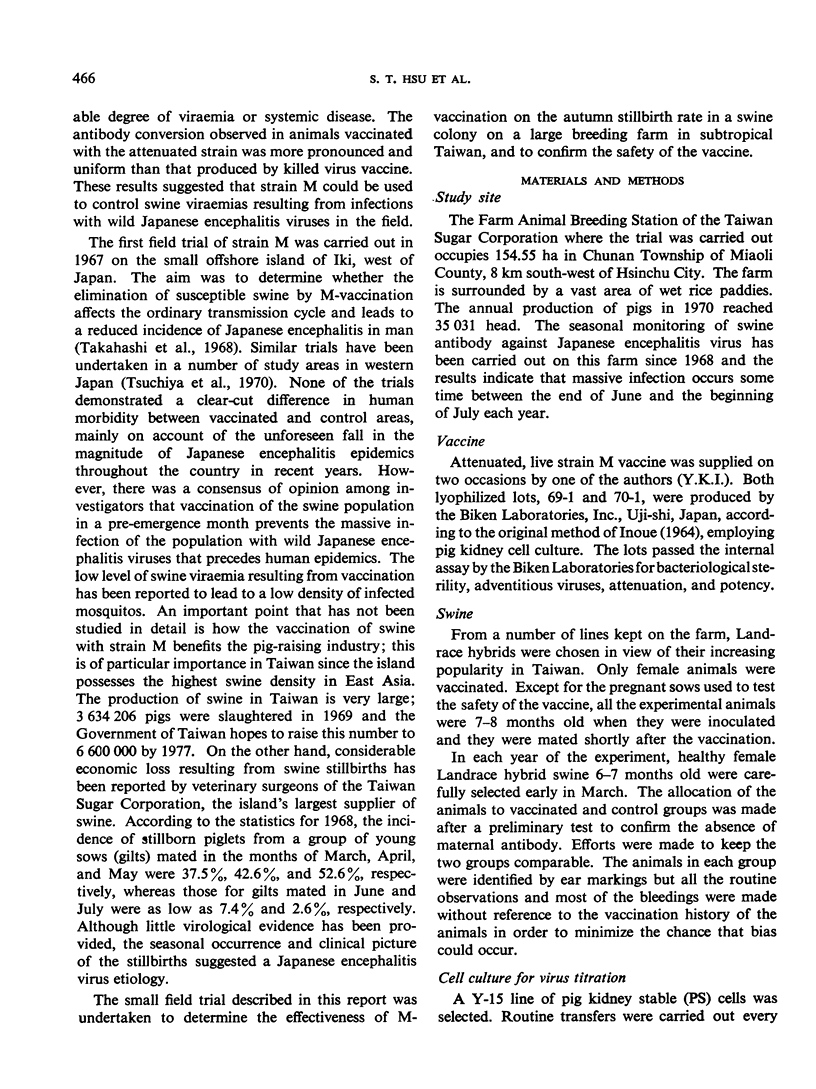
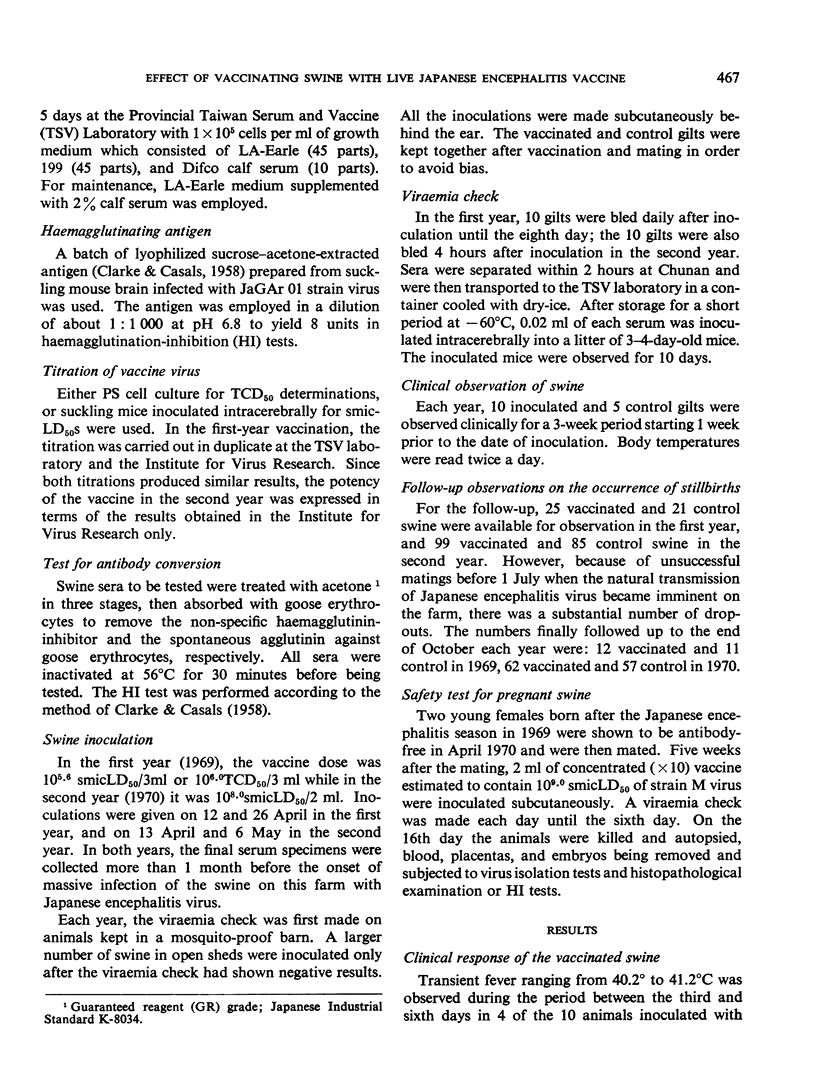
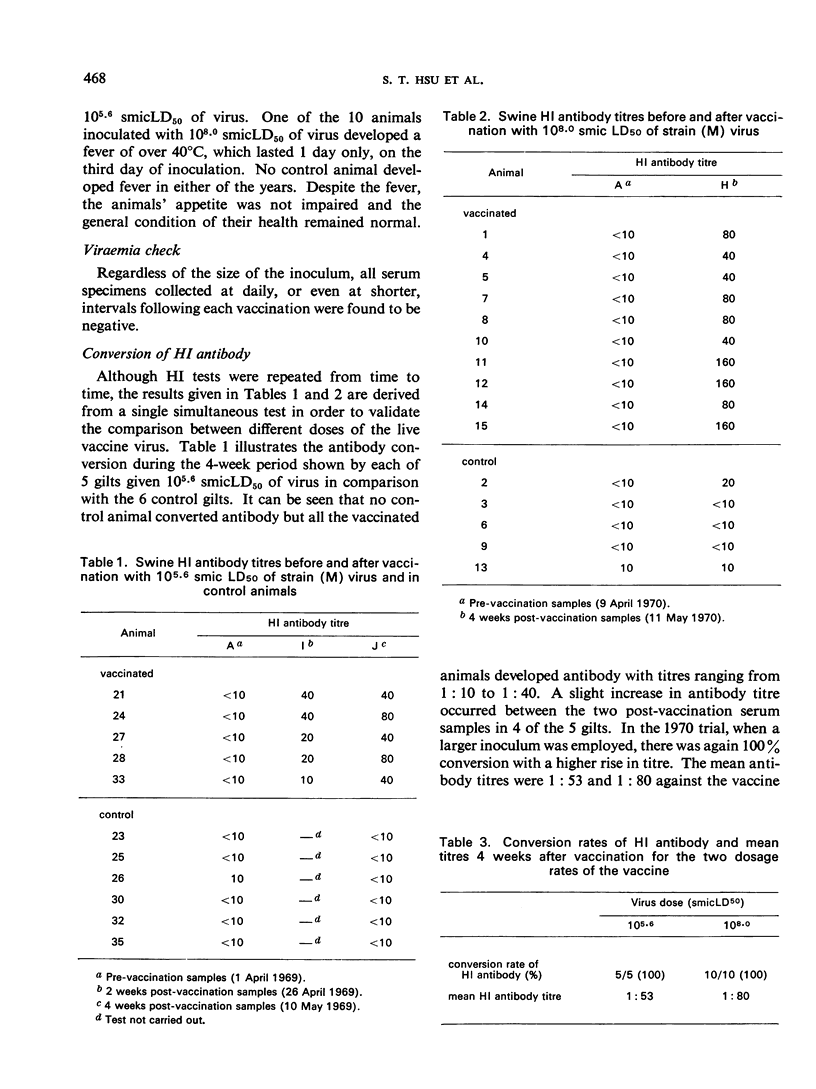
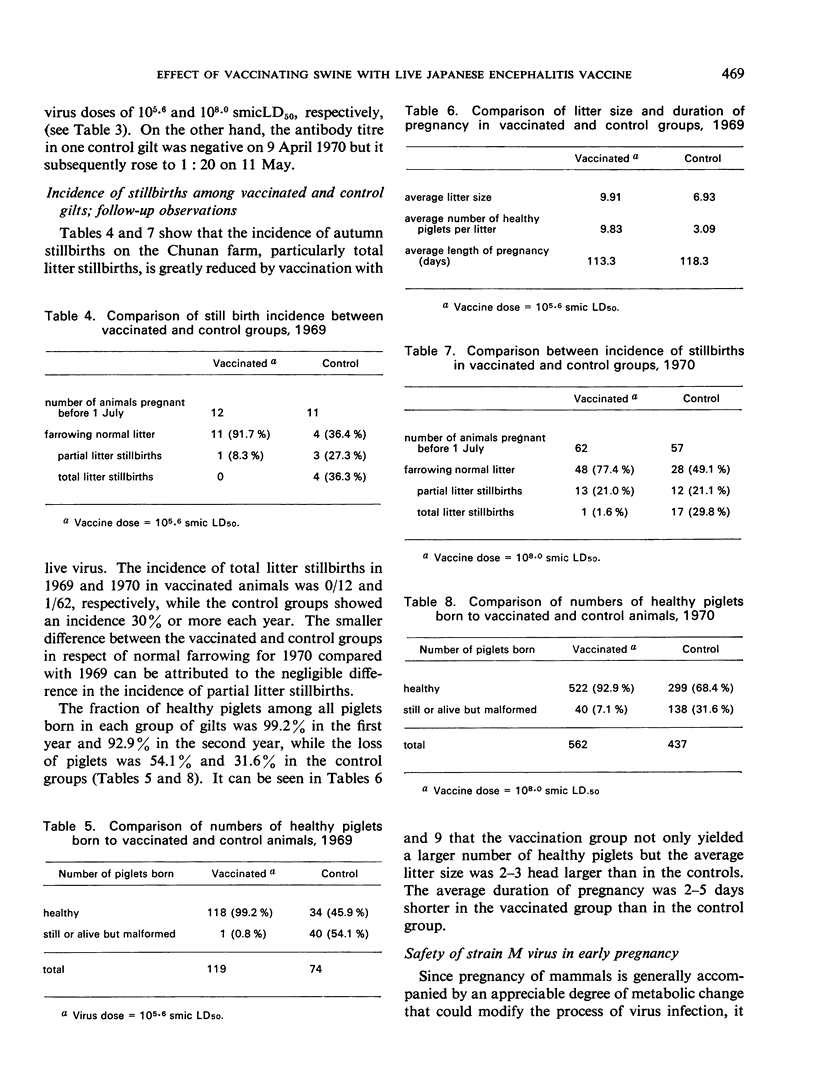
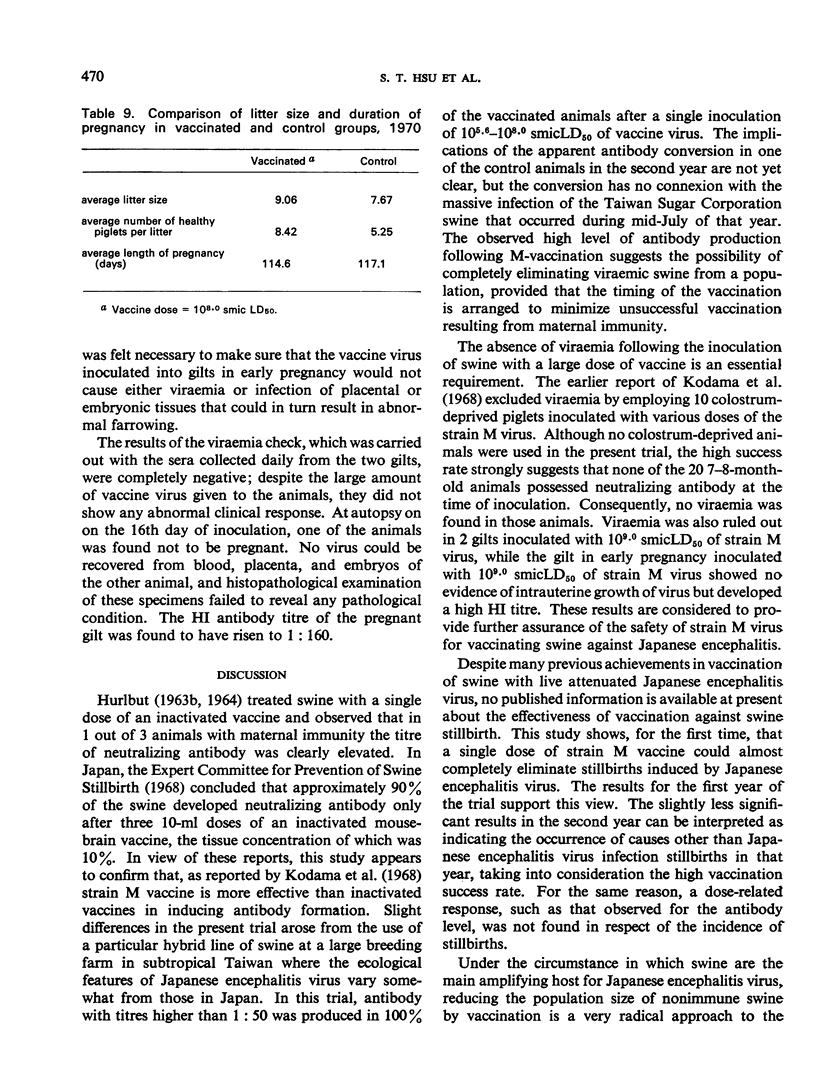
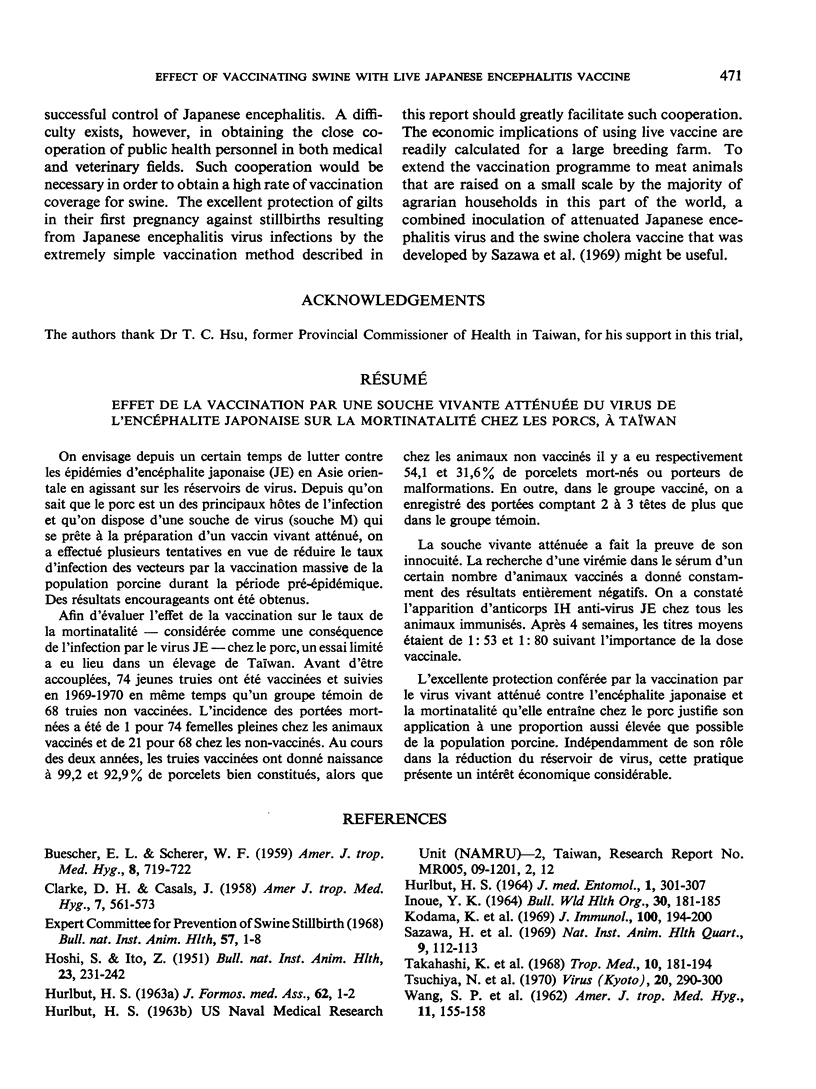
Selected References
These references are in PubMed. This may not be the complete list of references from this article.
- BUESCHER E. L., SCHERER W. F. Ecologic studies of Japanese encephalitis virus in Japan. IX. Epidemiologic correlations and conclusions. Am J Trop Med Hyg. 1959 Nov;8:719–722. doi: 10.4269/ajtmh.1959.8.719. [DOI] [PubMed] [Google Scholar]
- CLARKE D. H., CASALS J. Techniques for hemagglutination and hemagglutination-inhibition with arthropod-borne viruses. Am J Trop Med Hyg. 1958 Sep;7(5):561–573. doi: 10.4269/ajtmh.1958.7.561. [DOI] [PubMed] [Google Scholar]
- HURLBUT H. S. THE PIG-MOSQUITO CYCLE OF JAPANESE ENCEPHALITIS VIRUS IN TAIWAN. J Med Entomol. 1964 Oct;1:301–307. doi: 10.1093/jmedent/1.3.301. [DOI] [PubMed] [Google Scholar]
- Kodama K., Sasaki N., Inoue Y. K. Studies of live attenuated Japanese encephalitis vaccine in swine. J Immunol. 1968 Jan;100(1):194–200. [PubMed] [Google Scholar]
- Sazawa H., Sugimori T., Morimoto T., Miura Y. Antibody response in piglets by simultaneous inoculation with attenuated viruses of Japanese encephalitis and hog cholera. Natl Inst Anim Health Q (Tokyo) 1969 Summer;9(2):112–113. [PubMed] [Google Scholar]
- WANG S. P., GRAYSTON J. T., CHU I. H. Encephalitis on Taiwan. V. Animal and bird serology. Am J Trop Med Hyg. 1962 Jan;11:155–158. doi: 10.4269/ajtmh.1962.11.155. [DOI] [PubMed] [Google Scholar]


